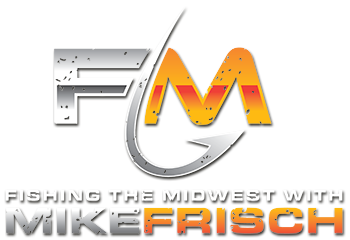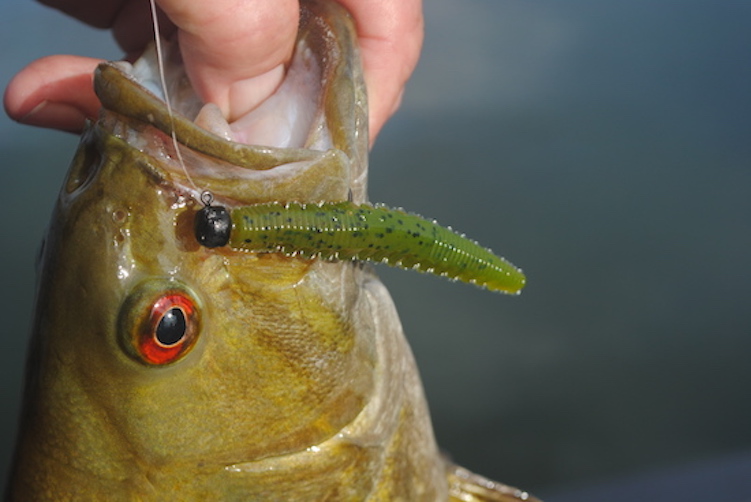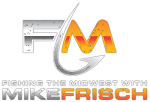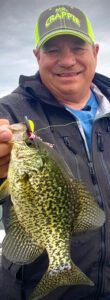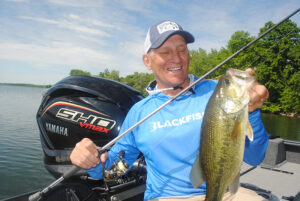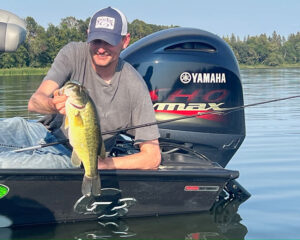THE NED RIG
by Bob Jensen
In the world of fishing, new lures and new techniques are developed regularly. Some of those lure types and techniques take a long time to become popular. Ned Rigs are like that. I’ve been aware of the Ned Rig and Ned Rigging for a good number of years, but have never really put it to use. That changed on an early June fishing trip with a couple of friends. During and after that trip, it became very apparent to me that Ned Rigging needs to become a bigger part of my fishing arsenal. Here’s why.
Ned Rig is a generic term for a jig/plastic combo that Ned Kehde made popular. Mr. Kehde is a fisherman from Kansas. According to much research, Ned fish’s mostly in his home state, and he’s usually on the water between the hours of 9:00 a.m. and 3:00 p.m. That window is usually not the best time of day to be fishing. Ned’s not as interested in big fish as much as he is interested in just getting bit, much like many of us. For that reason, he often employs a plain jighead tipped with a small piece of plastic. By employing this rig, even when fishing conditions aren’t optimum, he usually gets bit. And while largemouth are most often the target, many species of fish will eat a Ned Rig. This jig and plastic combo isn’t designed to catch big fish, numbers are what we’re after. The thing is though, when you catch a lot of fish, some of them are going to be larger than average.
Now to the day on the water that my friends and I experienced. Smallmouth bass were the target. The water in the lake was clear. The bottom could easily be seen in ten feet of water, and the smallmouth were shallow. Shallow fish in clear water are often spooky. That means that long casts are called for. The three of us started with different bait presentations to see if we could determine a pattern. Within an hour, we learned that the smallmouth and a variety of other species of fish wanted a small piece of plastic on a jig head: A Ned Rig.
As mentioned earlier, Ned Rig is a generic name for a jig with a small piece of plastic. After trying a variety of plastics, we learned that a bait called a Ned Ocho was what the bass were most willing to eat. These baits are just short of three inches in length. We also learned that rigging it on an eighth ounce Tour Grade Ned Rig Head was the way to go. This head style makes the plastic stand up, which helps the fish see it easier. We also learned that the “Dirt” color was best.
Also as mentioned earlier, long casts were required. We used Lew’s Mark Zona Signature Series rods in the All-Purpose model. These rods are seven feet long and make long casts simple, but they also provide outstanding sensitivity and hooksets. “All-Purpose” is a good way to describe this rod, as it would also be outstanding for live bait rigging or slip-bobbering for walleyes.
To add additional hooksetting and sensitivity, we used braided line with a ten foot fluorocarbon leader. The long leader enabled retying the jig frequently without retying the fluorocarbon to the braid. The braid increased sensitivity and hooksets, and the fluorocarbon made the Ned Rig appear very natural.
We fished maybe six hours on this trip and caught in the area of twenty smallmouth bass from fifteen to nineteen inches. We also caught a bunch of rock bass, northern pike, largemouth bass and walleye. This was in the middle of the day immediately after a weather front had gone through, in clear, shallow water. Certainly not ideal fishing conditions. And certainly fun. Lots of bites. For many of us, lots of bites are what we’re after when we go fishing. If you have a Ned Rig on the end of your line, your chances for lots of bites are increased.
Photo Caption-One of many smallmouth bass that ate a Ned Rig. This is a Ned Ocho in the “Dirt” color.
